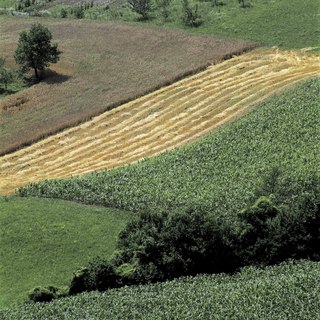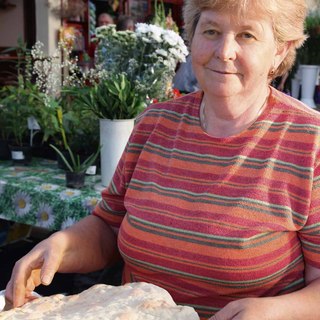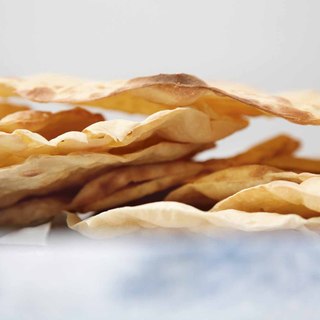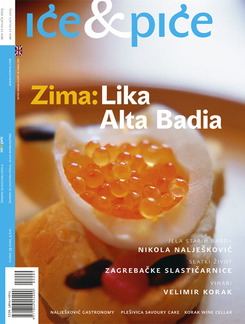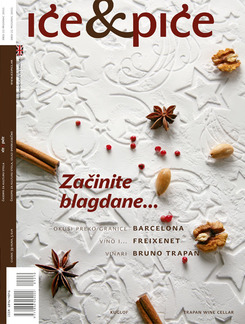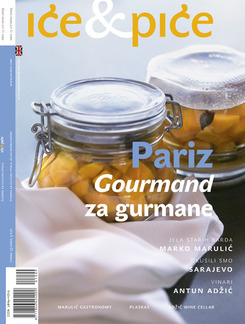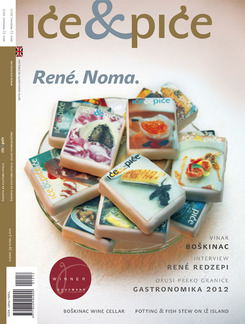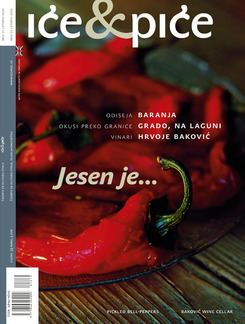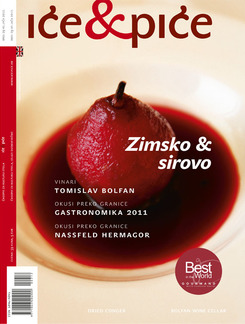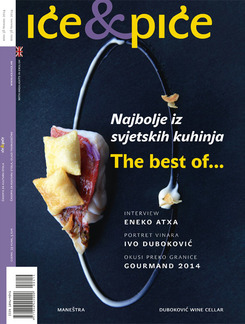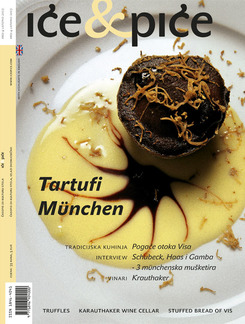We commonly say that a perfect couple go together like needle and thread, though we could say that they are like bread and milk, bread and butter, turkey with pasta tatters (mlinci). A perfect match in which only the turkey comes by itself, while tatters always have an s at the end. Pointless in the singular, like tagliatelle, they are never alone. In Croatian mlinac means both mill and a sheet of paste rolled out thin. But the etymology has been lost, and in the singular we know about it only as a kitchen machine for grinding coffee, pepper, poppy seed and so on. While mlinci refers only to mlinci. Flicking the dictionaries backwards, to try to find connections with mlinac and mlinci in the past, we can find an unclear explanation about mlinci as a dish, but the Kaikavian word is a feature from the 17th century on, meaning a thinly rolled out sheet of paste. Thus today sheets of paste, baked and dried, as orderly as sheets of paper in a pile wait just to leave their loneliness and become the dish that we all love – mlinci, in the plural.
A four-hour lunch
On the festive board, the golden brown roast, the crispy skin of which calls on to be picked at and to burn the fingers while nobody else is looking. Around the turkey crowd the torn mlinci, absorbing the gravy from the roast and getting crisped in the oven. It’s a festive occasion as soon as the roasted bird reigns on the table, and it’s like in the children’s poem so starts a lunch of four long hours, and the hedgehog and vixen are gleaming in grease. There is hardly a feast day when roast turkey has not been one of the most favourite of all dishes on the inland boards of Croatia. The guests at a Christmas or Easter table will make merry, just as the family gathered around a Sunday lunch, gastronomic peak of the week, which once simply meant fowl with potatoes. The celebration at the end of the week at holidays will be proportionally the greater, and the Sunday feast (hen and potatoes) will correspond to that of Christmas, when the tables will be able to boast a great roast fowl with mlinci. Lovers of roast fowl will perhaps rather select the fatter goose or the more gentle duckling (particularly if there are few guests for lunch). But all of these feathered creatures go best with mlinci, and indeed, at the end of the meal you’ll often hear the comment that the bird was good but after all the mlinci were the best. Personally, I don’t need meat on my plate at all with my mlinci. As long as they are not all smashed up or too dry or too greasy. I obediently chomp the tedious poultry of a Sunday, only the crispy skin of which delights me, but I’m always glad at the mlinci. They can even be greasy. And that is actually why they go together well with poultry that is often too dry. The roast has sweated long in the oven, as if plunged in a sauna to get the nice golden brown skin (the aim of every recipe for roast poultry). All its gentle fats melt in the fats in which is roasted, giving the essence of the roast that brings the most fascinating Croatian pasta to life. Banally simple, cheap and quick. With mlinci, you can’t go wrong – everyone likes them (even vegetarians fancy them). Wethink of them as festive food, and in fact they are just dried, reconstituted and baked sheets of pastry. A bit like that for strudel, only a little thicker. Nothing but flour, water and a bit of salt. Everyday ingredients. Dry pasta, not filled with anything, which has boiling water poured over it and is then roasted in the dripping in the roasting pan. An apparently modest side dish, but irreplaceable when you want to use every last drop of that delicious dripping from the roast.
Mlinci long ago sealed their fate. Turkey and mlinci, the more festive version of the celebrated Sunday fowl and potatoes, are as inextricably linked together as bread and milk. They are a phrase, inconceivable without each other. The best love story of Zagorje is not that of Veronika Desinićka but that of turkey and mlinci, eternal pair from the hills to the north of Zagreb best perhaps described by Joža Horvat: Zagorje... All these villages and hamlets, wine huts and hills, chapels on the hill tops, the patchwork of fields, the rabbits, the starlings and doves and pheasants, the tamburitzas and little round hard hats, the turkey and mlinci, the slightly sour must, the crackling chestnut, the old-fashioned pears and the daft lasses.
Not fair of course, to the lasses, the girls who came to maidservant it in the city, with whom the peasant cuisine crept into the burgher menus (girls with the typical names of Štefica and Bara were adept at pulling out strudel pastry, mixing a baked pudding, rolling out a strudel, and mlinci without any doubt come into that sparkling line of Zagorje rural treats). The lady of the house would give her orders and absolutely would not have mixed up mlinci mixtures or plucked hens. Yes, it’s inconceivable, but at that time, chickens were bought live. The girls did the dirty and auxiliary jobs, though the ladies would sometimes think up what to cook. One Saturday when some not very well organised housewife would be short of inspiration some Pepica or Katica would say, hey, why not turkey with mlinci? In those years, i.e. the early twentieth century, turkey was a favourite, and those from Zagorje were particularly highly valued, and could be bought even in London. That was the time of very carefully planned weekly menus, of colonial shops for coffee and sugar and such like and wood burning ranges. On their hotplates the thinly rolled out mlinci would be roasted, give off their smells, smoke and crack and bake into little black eyes that still wink at you in the market places of Zagreb. Noodles for soup and mlinci are the only home-made pasta that you can buy at first hand. Well, those from the shops are not all that bad, but they’re not the real thing. They are softer, less well baked, and they can be ruined more easily. Although they’re easy and quick to prepare in the oven, I don’t know a single person who makes them at home. Alas. There’s the every-ready excuse, they’re not so good when they are not roasted on top of the hotplate. But because of the appetites they certainly whet, the mlinci have nevertheless survived the advent of gas and electric ranges. They have made their way into small businesses and industry and spread their range outside Zagorje.
Sancho Panza and no Don Quixote
The advantage and the curse of mlinci is that they must without a doubt be the best accompaniment for roast meat. Potatoes can indeed have a lovely browned outside, but the dripping of the roast just runs off them. Mlinci soaks it up to the last drop, and so when you roast fowl, forget about oil. Don’t fall victim to the bogey of cholesterol, which is there is less of in lard (if you don’t go overboard), but, light of heart, roast your turkey in lard, and when the roast is done, pour hot water over your mlinci, drain and place them in the roasting tin you’ve used for roasting the turkey. Roast them a short time and serve (not even the kitchen novice can get disgraced when preparing mlinci). They are much less greasy than when you do them in oil. And because they are so good with roasts, mlinci are condemned to a kind of mono-use in the kitchen. Always in their masterly minor role, they wait for some new time, some new, fanciful interpretation. But give me just mlinci for a starter, for a main dish, as long as I don’t have to eat the turkey. Hats off to the bird, but mlinci can do much more. While I was moaning once in this way, lazy and full after a lovely lunch, I found out about a wonderful Mediterranean adventure of mlinci and my good friend Niksza Kuszelj, whose invitation to the table I’m always happy to accept. He thought about mlinci and chard, and some wonderful fusion dish. Carefully pondered simplicity is always the ace in the hole of his kitchen, and so he blended mlinci, pieces of prosciutto, chard, parmesan and olive oil. What mlinci they were...
